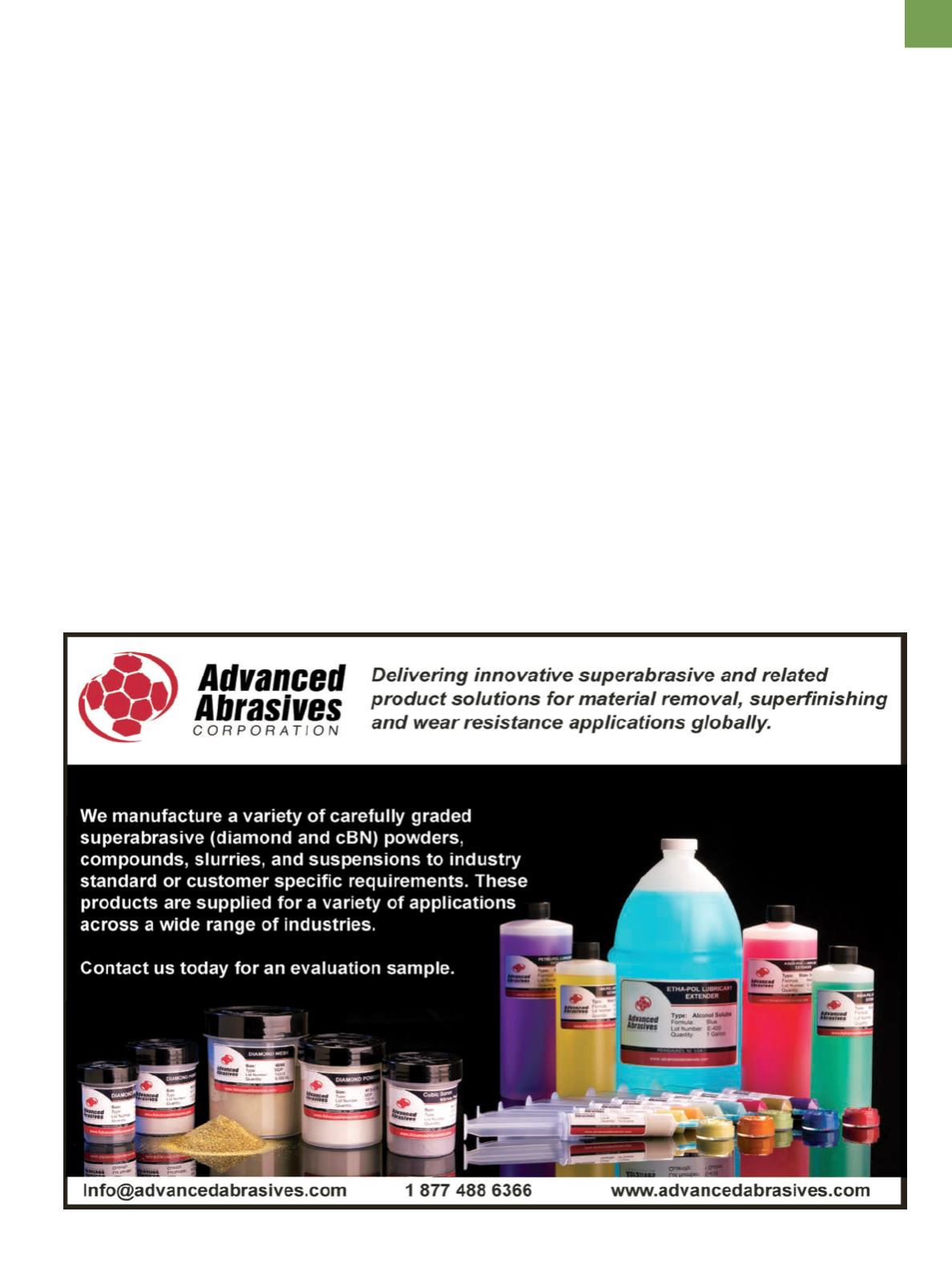

as shear bands, kink bands result in large
but limited local deformation, do not
cause microstructural damage, and may
even provide a beneficial mechanical re-
sponse. Kink band formation allows for
very large deformations at a constant
stress, with neither a load drop nor an
increase in engineering stress that would
occur during homogenous deforma-
tion
[7]
. Therefore, kink bands may prove
beneficial for the design of energy ab-
sorbing structures where large strain de-
formation at a constant reaction force is
a highly desirable mechanical response.
Summary
Cu-Nb nanolaminates can be pro-
duced in bulk form using the industry
scalable ARB process. These materials
display high strengths (>1 GPa) and show
a strong propensity for kink band forma-
tion during layer parallel compression.
The combination of microstructural
stability, high strength, and unusual de-
formation behavior make metallic nano-
laminates intriguing candidate materials
for structural applications.
~AM&P
For more information:
Thomas Nizolek
is a Ph.D. student at University of Califor-
nia, Santa Barbara,
tnizolek@engr.ucsb.
edu, www.materials.ucsb.edu.
This article has been adapted from a full
length feature in
Metallography, Microstruc-
ture, and Analysis
3.6 (2014): 470-476,
DOI 10.1007/s13632-014-0172-2. © Spring-
er Science+Business Media New York and
ASM International 2014.
Acknowledgment
T.N. was supported by the Department of
Defense through the National Defense Sci-
ence & Engineering Graduate Fellowship
(NDSEG) Program. J.T.A., T.N., I.J.B, and
T.M.P. wish to acknowledge support by the
UC Lab Fees Research Program,
Award #238091.
References
1. N. Mara and I. Beyerlein, Review: Effect
of Bimetal Interface Structure on the
Mechanical Behavior of Cu-Nb fcc-bcc
Nanolayered Composites,
J. Mater. Sci.
,
Vol 49(19), p 6497-6516, 2014.
2. M. Demkowicz, et al., Interface Structure
and Radiation Damage Resistance in Cu-
Nb Multilayer Nanocomposites.
Phys. Rev.
Lett.
, Vol 100(13), p 136102-136104, 2008.
3. M. Knezevic, et al., Texture Evolution in
Two-Phase Zr/Nb Lamellar Composites
During Accumulative Roll Bonding,
Int.
J. Plast.,
Vol 57, p 16-28, 2014.
4. K. Yasuna, et al., Bulk Metallic Multilayers
Produced by Repeated Press-Rolling and
Their Perpendicular Magnetoresistance,
J. Appl. Phys.,
Vol 82(5), p 2435-2438, 1997.
5. L. Ghalandari and M. Moshksar, High-
Strength and High-Conductive Cu/Ag Mul-
tilayer Produced by ARB,
J. Alloy. Compd.,
Vol 506(1), p 172-178, 2010.
6. I. Beyerlein, et al., Interface-Driven Mi-
crostructure Development and Ultra High
Strength of Bulk Nanostructured Cu-Nb
Multilayers Fabricated by Severe Plastic
Deformation
, J. Mater. Res.,
Vol 28(13),
p 1799-1822, 2013.
7. T. Nizolek, et al., Enhanced Plasticity
via Kinking in Cubic Metallic Nanolam-
inates,
Adv. Engr. Mater.,
DOI: 10.1002/
adem.20400324, 2014.
A D V A N C E D
M A T E R I A L S
&
P R O C E S S E S | F E B R U A R Y
2 0 1 5
2 1


















